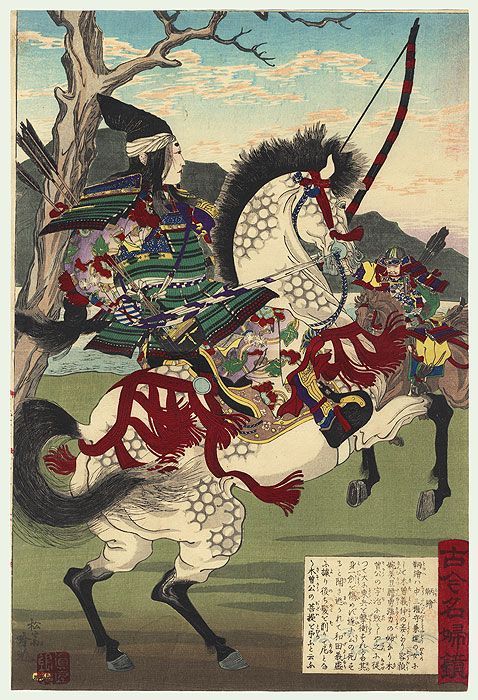
While it was considered inappropriate for women born into Samurai clans to train in the martial arts, such things were not impossible, especially when weaker clans needed every warrior they could muster. Onna-bugeisha, sometimes erroneously called female Samurai, protected their household from soldiers, bandits and brigands. Some would trained in the yari, others the naginata, sometimes at an expert level, in order to protect their household. Some seemed to be ordinary women but were in fact fearsome martial artists.
Onna-bugeisha were not as common as samurai, with most upper-class women traditionally responsible for running their husband’s households. However, recent research shows women did fight in battles, with DNA remains from the site of the Battle of Senbon Matsubaru in 1580 showing that 35 out of 105 bodies were female.
kunoichi
Not all ninja were men. The female onna-bugeisha were warriors belonging to Japanese nobility, and there were also female ninja, or kunoichi. Women were well suited to the clandestine role of the ninja and were uniquely able to infiltrate enemy strongholds in the guise of servants, dancers, concubines and geisha. The kunoichi also sometimes acted as assassins.
The most famous female ninja was Mochizuki Chiyome, who was descended from Kōga ninja and the wife of a samurai lord. When her husband was killed in battle, she came under the protection of her late husband’s uncle, Takeda Shingen, the leader of the Takeda clan. Shingen asked Mochizuki to form a network of kunoichi to spy on rival clans and daimyo. Mochizuki recruited a band of female orphans, refugees and prostitutes, who she trained in the clandestine arts of the ninja. Mochizuki’s kunoichi gathered information and acted as messengers, often travelling as miko (priestesses) to avoid suspicion. Posing as geisha, prostitutes and servants, the kunoichi could gain access to the most heavily guarded strongholds. Like their male counterparts, they were also trained assassins. The network grew to be several hundred strong before Shingen’s death in 1573, after which Mochizuki vanishes from the historical record.